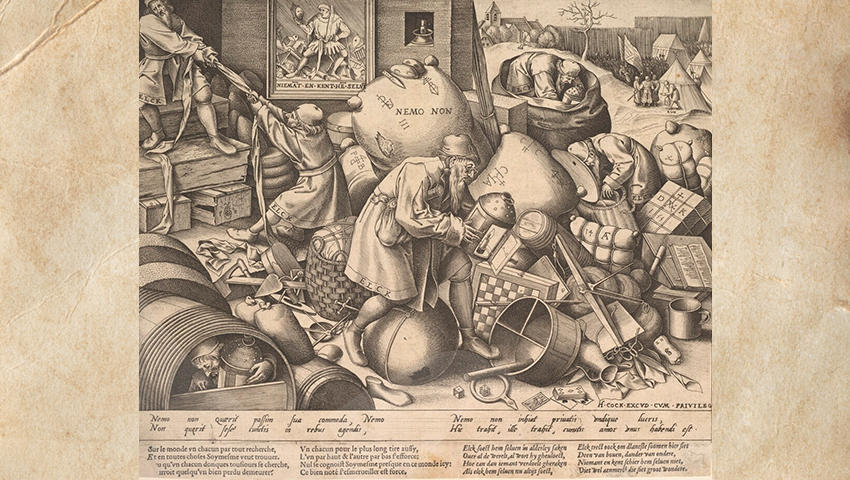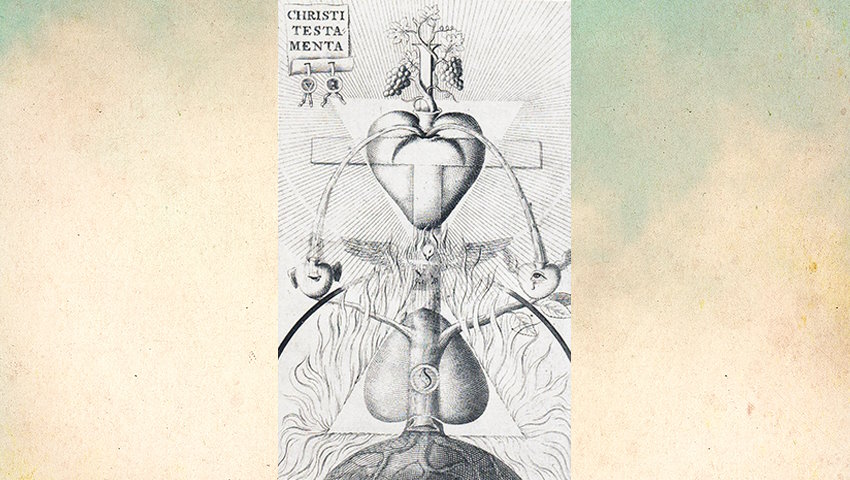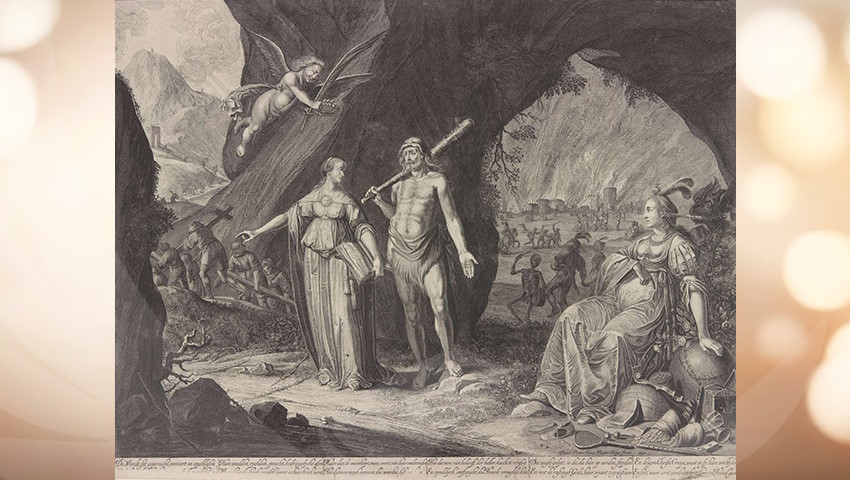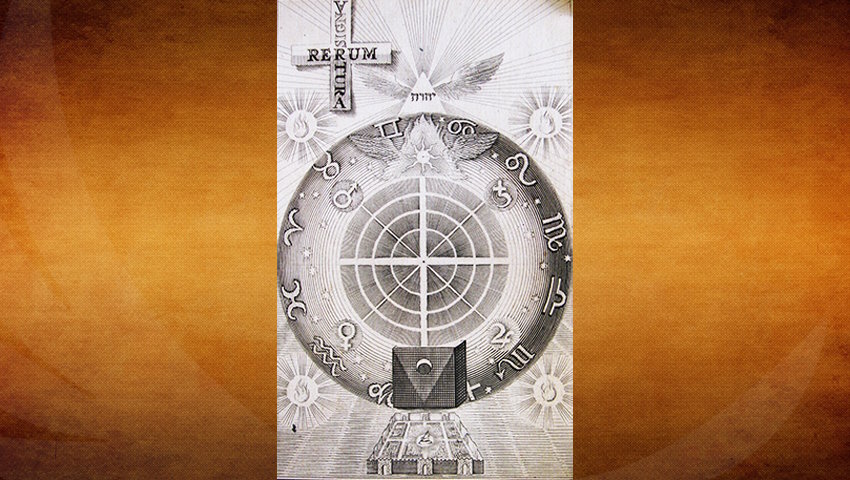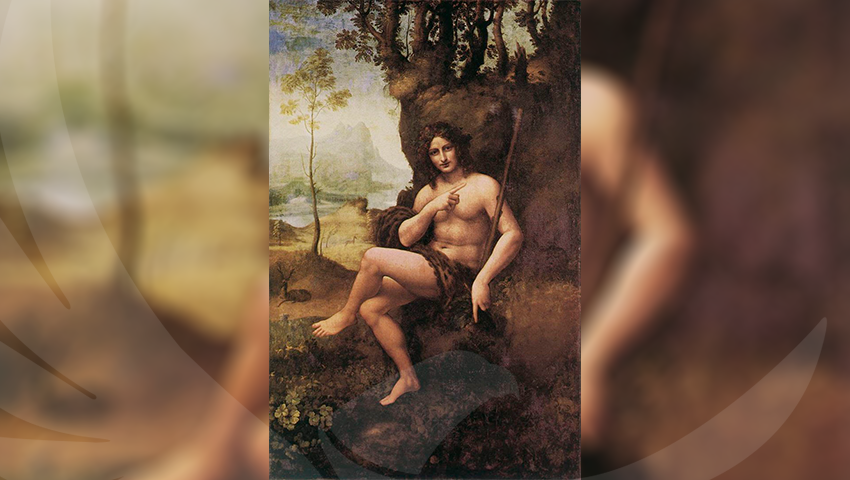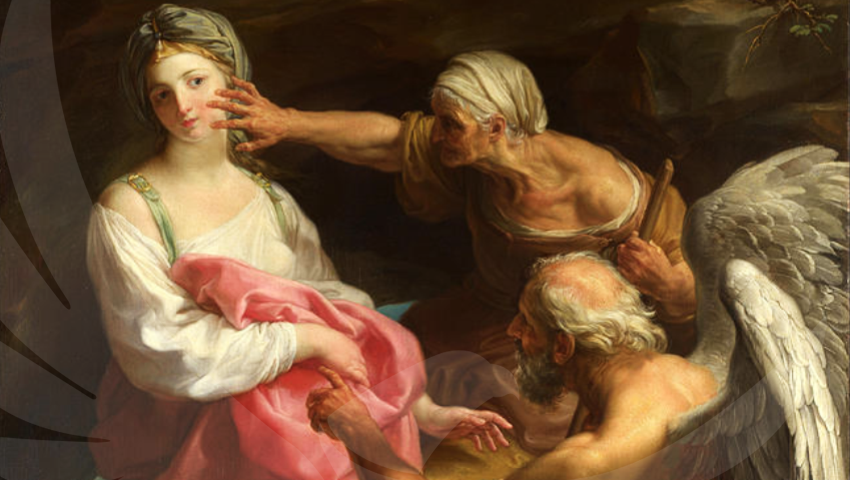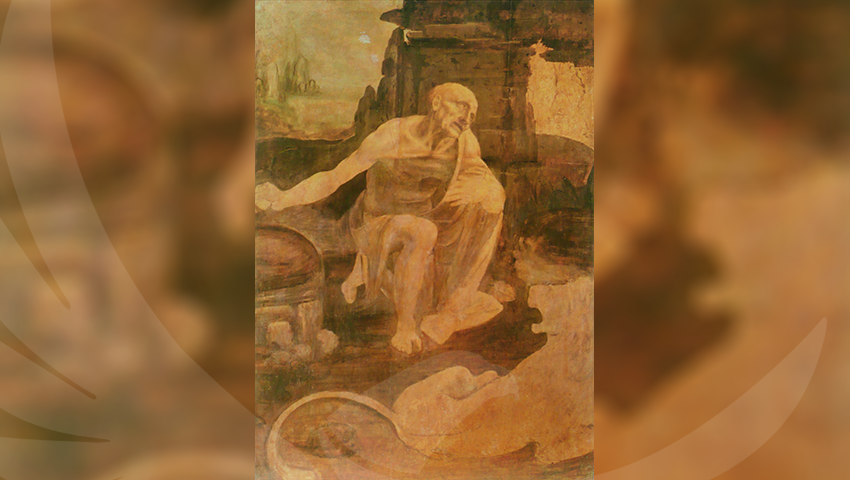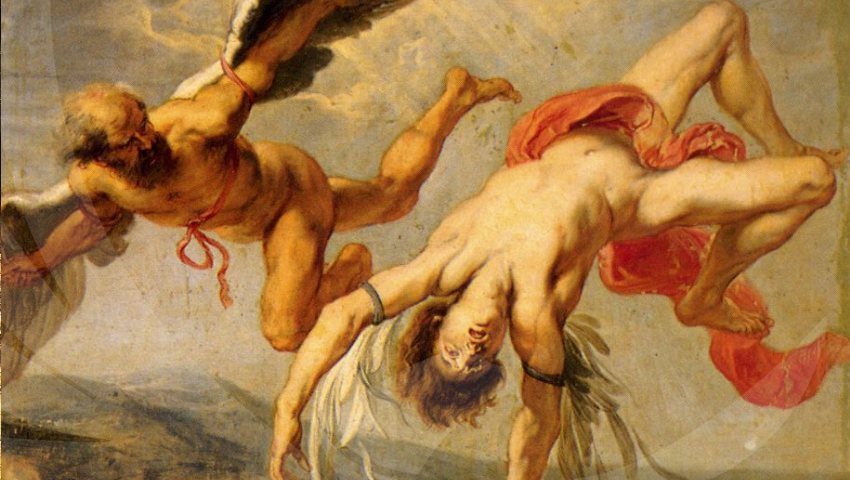أصدقائي الأعزاء جدا:
يسعدني أن أرسل إليكم، بهذه المناسبة، نقشًا قام به الرسام
بيتر بروجل Pieter Brueghel, الشيخ، بين عامي ١٥٢٦ و١٥٦٩
هذا النقش بعنوان
لا أحد يعرف نفسه
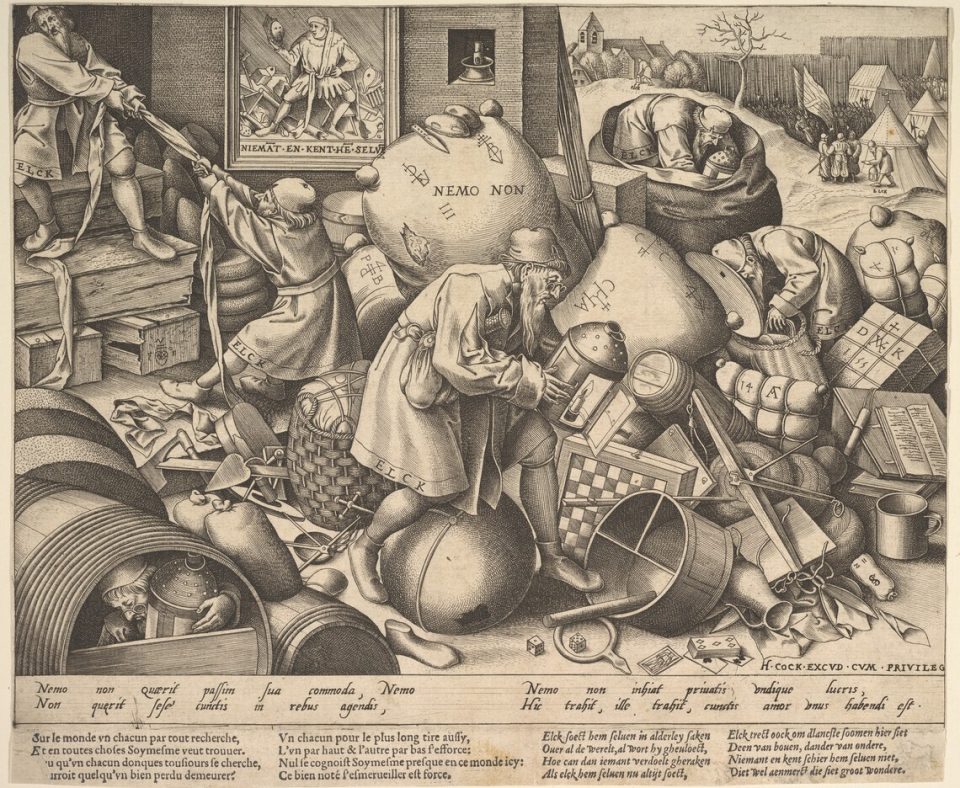
لنبدأ، أيها القراء والقارئات الأعزاء، لبعض الاعتبارات الجديرة بالملاحظة، فلنرى:
في الأعلى على اليسار، صورة لرجل يرتدي زي العصور الوسطى ينظر إلى نفسه في مرآة، وأسفل الصورة مكتوبة باللغة الفلمنكية:
«NIEMA[N]T. ES. KENT. SELVE[N]» «لا أحد يعرف نفسه» …
هناك ما مجموعه ثمانية شخصيات لها نفس الشخصية، كلمة ELCK تعني “الجميع” أو “أي شخص” باللغة الهولندية. اثنان، بالقرب من اللوحة، يتنازعون قطعة قماش. ثلاثة منهم يحملون مصباحًا في أيديهم، يبحثون بين الحقائب التي بها بعض الأرقام والرموز المكتوبة عليها، والصناديق، والأشياء في الخلفية، يمكن رؤية شخصيتين أخريين، أحدهما يبحث بمصباحه بجوار جيش، والآخر بعد ذلك، في الطريق إلى الكنيسة. والثامن، في الجزء السفلي الأيسر من النقش، موضوع في برميل، يذكرنا بديوجين. من المدهش أنه بالإضافة إلى الأكياس والأدراج، هناك أدوات قياس تبدو مهجورة: ميزان، فأس، مسطرة، طاولة شطرنج، نرد، أوراق تاروت، مقص، إبريق مقلوب …
في وسط النقش، على كيس، اكتب NEMO NON،”لا أحد لا“ ويوجد على رأس الكيس سكين وما يشبه بعض الحجارة أو الخبز…
يبحث الرجل العجوز، ELCK، عن شيء ما، لكن بالرغم من أنه يمتلك نظارات ومصباحًا، يبدو أن هناك خطأ ما في بحثه، حسب العبارة اللاتينية
Nemo non quaerit passim sua commode, Nemo Non querit sese’ cunctis in rebus agendis, Nemo non inhiat privatis undique lucris, Nemo non inhiat privatis undique lucris. Hic trahit, ille trahit, cunctis amor unus habendi est.
الترجمة: ‘لا يوجد أحد لا يطلب راحته في كل مكان. لا يوجد أحد لا يبحث عن نفسه في كل ما يفعله. لا يوجد أحد لا يسعى وراء منفعته الخاصة في كل مكان. هذا يشد لصوبه، ذلك يشد لناحيته، كلهم لديهم نفس حب الاستحواذ.
الترجمة الثانية: ‘لا يوجد أحد لا يطلب راحته في كل مكان. لا يوجد أحد لا يبحث عن نفسه في كل ما يفعله. لا يوجد أحد لا يسعى وراء منفعته الخاصة في كل مكان. هذا يشد لصوبه، ذلك يشد لوجهته، كلهم لديهم نفس حب الاستحواذ’.
من الغريب أن الشخص-الذي هو نفسه في المواضع الثمانية الموضحة أعلاه-، ب مع المصباح وبحثه، من ناحية، يذكرنا بديوجين الحكيم Diógenes، ولكن من ناحية أخرى، فإن كلمة ELCK مكتوبة على ملابسه، مما يعني إنه يمثل أيًا منا.
توجد جملتان في الأسفل باللغتين الفرنسية والهولندية القديمة.
الترجمة الثالثة:
“في جميع أنحاء العالم، يبحث الجميع عن أنفسهم في الأشياء ويترتب على ذلك إن أكثر من واحد يفقد نفسه. كلهم يشدون البطانية لتجاههم. لا أحد سيعرف نفسه بهذه الطريقة، وإذا فهم ذلك، فسوف يستمد قوته ويتعجب من ذلك.
ماذا يعني كل هذا أيها القارئ التواق؟
ما هو واضح جدًا في هذا النقش هو التمثيل التصويري للبحث الأبدي عن واقعنا ومحاولتنا الفاشلة للعثور عليه بين الأشياء المادية. لطالما بحث الإنسان في الخارج، في العالم المادي، عما يحمله في داخله، وهذا الجهد المحزن يقودنا فقط إلى الاضطراب.
ترك الإغريق القدماء منقوشين على واجهة معبد دلفي: HOMO NOSCE TE IPSUM ،» يا رجل، اعرف نفسك»، ووفقًا للعديد من العلماء هذه العبارة استمرت ان تجعلنا نفهم: »وستعرف الكون والآلهة التي تسكنها». لقد أوضح لنا الغنوص الأبدي دائمًا أن جميع الحقائق الموجودة في الكون الكبير، مطابقا، تم جمعها داخل الإنسان – الكون الصغير–.
ومع ذلك، على الرغم من تكرار ذلك ملايين المرات، تجاهلت العقلية العنيدة للجماهير البشرية ما كانت تخبرنا به هذه العبارة لآلاف السنين. حاول الإنسان الدنيوي دائمًا العثور على السعادة وسبب حياته من خلال البحث عن الأشياء المادية، وكلها عبث تام.
هذا هو السبب في أننا نرى في الخلفية شخصية ترتدي أسلوب العصور الوسطى تنظر إلى نفسها في المرآة. هذا يذكرنا بتلك العبارة التي تحاول في أحد احتفالاتنا التأكيد على: “انظر إلى نفسك، وكن قاضيًا لك، وافحص ضميرك وصحح نفسك، وما إلى ذلك.”
من ناحية أخرى، يظهر لنا أن هذه الجسارة تحدث في جميع جوانب حياة البشر. هذا هو السبب الذي يجعلنا نرى نفس الشخص يرتدي نظارات يتكرر في مشاهد مختلفة ويبحث دائمًا عن شيء ما… لهذا السبب، نفس الشخصية تسمى ELCK، والتي تعني “أي شخص“. لسوء الحظ، نحن جميعًا مقطوعون من نفس القماش. في أوقات مختلفة في هذه المشاهد، يحمل الرجل الصغير مصباحًا وحتى في هذه الحالة لا ينفعه… لماذا؟ حسنًا، لأنه في هذه الظرف، لأنه المصباح الفكري، وليس مصباح الإضاءة الداخلية.
الشيء المثير للاهتمام الذي من الجيد تسليط الضوء عليه هو حقيقة الفوضى التي ينغمس فيها الرجل العجوز الذي يمثل أيًا منا. نرى هناك كل أنواع الأشياء، الحقائب، المقصات، الساعات، بطاقات التاروت، العدسات المكبرة، الأكواب، البوصلات، المساطر، إلخ… مما يشير إلينا أن هذا البحث الأعمى يؤثر على جميع جوانب حياتنا المتنوعة…
في وسط هذا النقش يمكننا أن نرى كيسًا كبيرًا مكتوبًا عليه كلمتين: NEMO NON – ترجمة: “لا شيء”، وفوق الكيس المذكور نرى رغيفين من الخبز وسكين. ما كل هذا؟ الجواب: هاتان الكلمتان مع تلك الأرغفة والسكين تخبراننا: لا أحد يبحث عن خبز الحكمة ولا يستخدم أي شخص سكين الضمير لهضمها.
في الجزء الأيسر العلوي من هذا النقش المميز نرى شخصين يتنازعان نفس القماش أو المنشفة. هذا هو الصراع الأبدي الذي تغرق فيه البشرية، في محاولة للحصول على العالم كله لأنفسهم، والحقيقة، والمدعاة، لكنهم في الواقع يتقاتلون فقط من أجل أن يتم حشوهم في عقائدهم…
الشخصية التي في الوسط تحمل مصباحًا في يديه لا تنتبه حتى إلى الحقيقة أن بين رجليه الكرة الأرضية التي تمثل الفوضى المعدني أو عطارد الحكيم، أيها القراء والقارئات الأعزاء، هكذا كانت إنسانيتنا دائما تبحث خارجيًا عن الحقيقة بين الأشياء المادية والخادعة، متجاهلة أننا نحمل الكنز الذي نبحث عنه في الداخل.
في حالة النوم العميق هذه، يوجد رجلان صغيران نقدرهما في أسفل النقش: أحدهما يذهب مع ازدحام المرور الديني إلى الكنيسة والآخر يتجه نحو جيش. تعكس كلتا الحالتين أنه أينما كنا أو نفعل ما نفعله، طالما أن وعينا نائم فلن نجد ما نبحث عنه…
أقترِح الآن بعض العبارات للتفكير في:
“من الملائم التأمل يوماً بكامله بعد القراءة لمدة ساعة «
ماسيلون
»أولاً، تأمل، ثم اتخذ قرارك «.
مولتك
» أوه، بهجة الرداءة! عدم القدرة على التفكير، وعزل النفس في اللاوعي! وأن بشأن دراجة تكون قادرًا على الإغواء! «
روبن داريو
» ليس عظيماً من يعرف الكثير ولكن من يتأمل كثيراً.
سيتيمبريني
“تصرف كما لو أن مبدأ إرادتك وسلوكك سيتم إعلانه رمزًا عالميًا لجميع الكائنات.”
إيمانويل كانط
FATA VOLENTEM DUCUNT NOLENTEM TRAHUNT.
─ “القدر يقود أولئك الذين يريدون ذلك بهذه الطريقة، أولئك الذين لا يريدون ذلك يتم جرهم على طول”.
كوين كان كو
KWEN KHAN KHU
